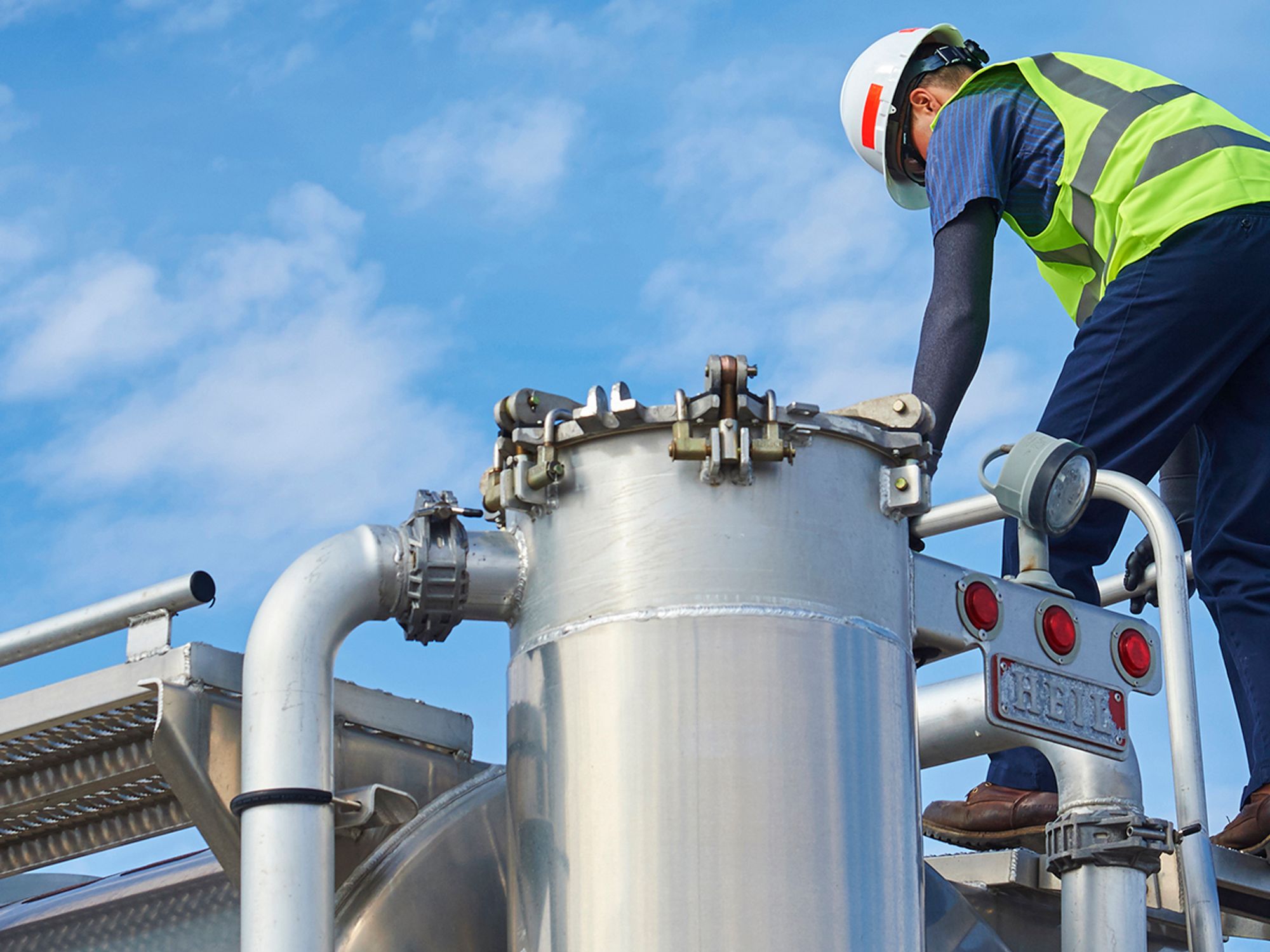Protect workers on CMV trailers or tankers

- Federal agencies do not require fall protection for employees working on flatbeds, tankers and other commercial motor vehicles, or train cars.
- Even though it is not required, fall protection is a good idea for employees who work on these surfaces.
Even though drivers working on top of flatbeds, tankers, and other commercial motor vehicles (CMVs) face significant hazards, neither the Federal Motor Carrier Safety Administration (FMCSA) nor the Occupational Safety and Health Administration (OSHA) currently have standards directly addressing falls from CMVs. In fact, the OSHA Construction regulations specifically exclude vehicles and trailers from the definition of a walking-working surface. However, some standards (and common sense) apply.
OSHA has determined that fall protection is generally not required for drivers working on top of trailers. The key exception is if the employee is working on top of a vehicle that is positioned inside of or contiguous to a building or other structure where the installation of fall protection is feasible. In such cases it would be expected that the worker be provided with fall protection. OSHA published its position in an interpretation dated October 18, 1996.
Under OSHA’s “general duty clause” (section 5(a)(1) of the OSH Act):
- It is expected that employers will not force or allow employees to be on top of trailers if a situation exists that may lead to injury or death. An example of such a situation could be the presence of inclement weather, such as ice or rain, making the trailer catwalk slippery.
- Employers should make sure employees have been trained to minimize the risks and to perform their work safely.
Despite the federal standards (or lack thereof), common sense would dictate that fall protection is usually a good idea when working on a tractor or trailer. There is no standard method used for fall protection from CMVs, but a personal fall arrest system is recommended.
